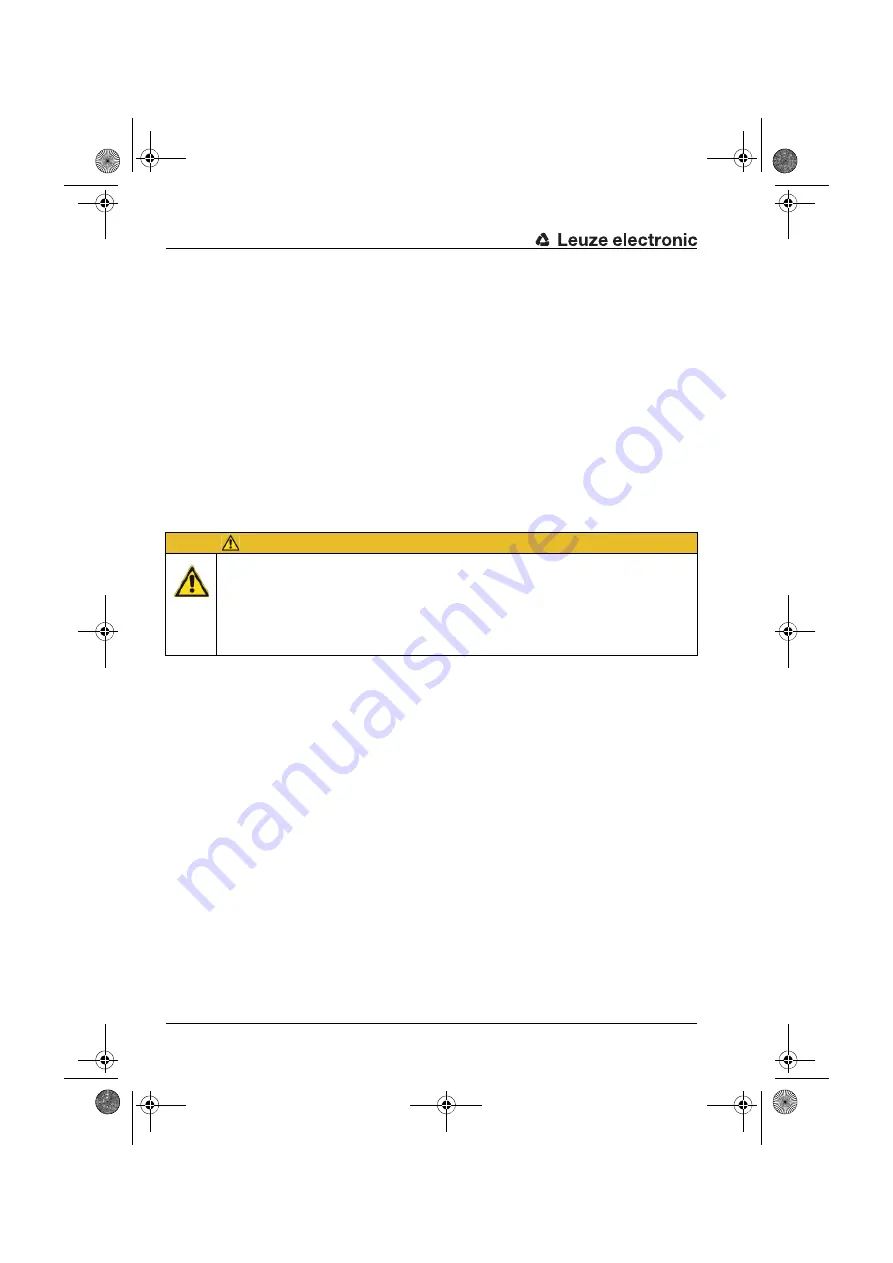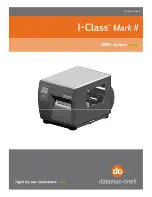
DeviceNet / CANopen
46
DDLS 200
Leuze electronic
Response in the event of buffer overflow
If, as the result of errors on the CAN bus segment, no DDLS 200 data can be transmitted to this seg
-
ment or data can be transmitted only sporadically, the DDLS 200 reacts as follows:
1.
CAN frames are temporarily stored
(64 frames for baud rates
800kBit and 128 frames for baud rates < 800kBit).
2.
If between 30% and 70% of the memory is occupied, the "BUF" LED flashes.
3.
If > 70% of the memory is occupied, the "BUF" LED is constantly illuminated.
4.
In the event of a buffer overflow, the memory is completely deleted.
Response in the event of errors on a sub-segment
Other segments are not informed of errors on a sub-segment.
9.7
Important information for system integrators
Due to the bit-synchronous arbitration mechanism in the CAN and the resulting high time require
-
ments, arbitration via the optical, free-space data transmission system (abbreviated DT) is not possi
-
ble. One original segment is divided into two sub-segments. Because of the division into multiple
segments, there are several points which must be observed when designing the system.
ATTENTION!
The notices provide initial information and describe the working principles of the optical
data transceiver with DeviceNet and CANopen.
The notices must be read by each user before the first commissioning of the DDLS 200
with DeviceNet and CANopen.
Possible restrictions in the time behavior of the optical data transmission in comparison to
copper-based data transmission are described here.
DDLS200_E.book Seite 46 Mittwoch, 19. Februar 2020 12:22 12
















































